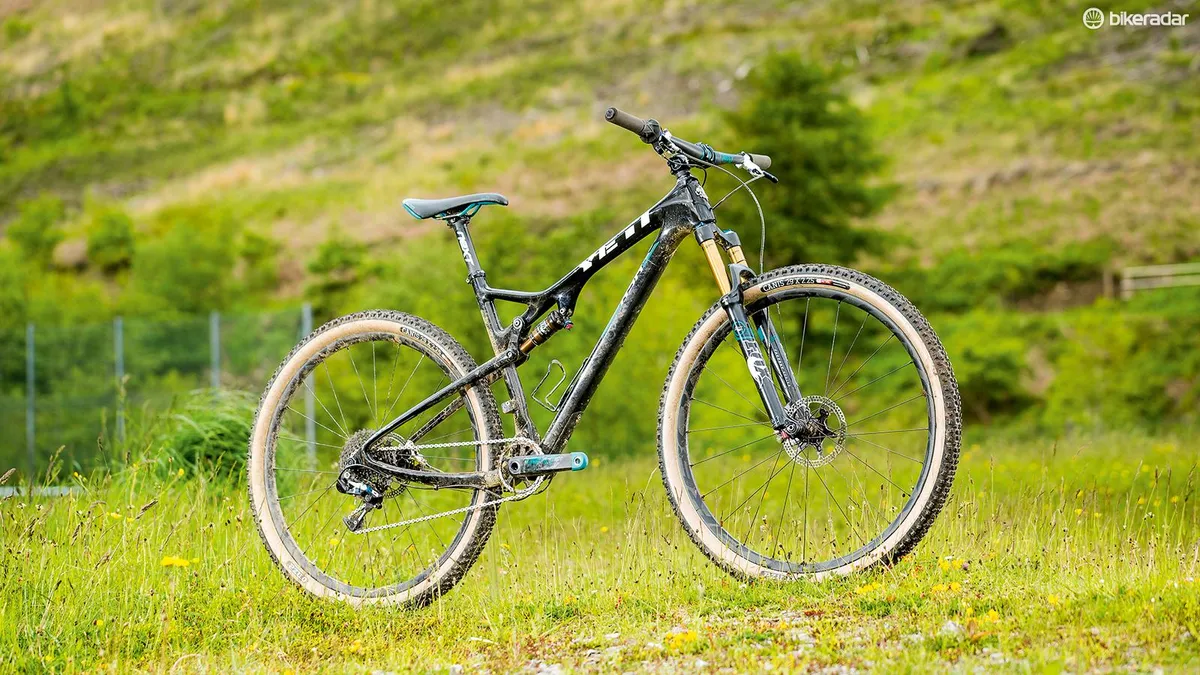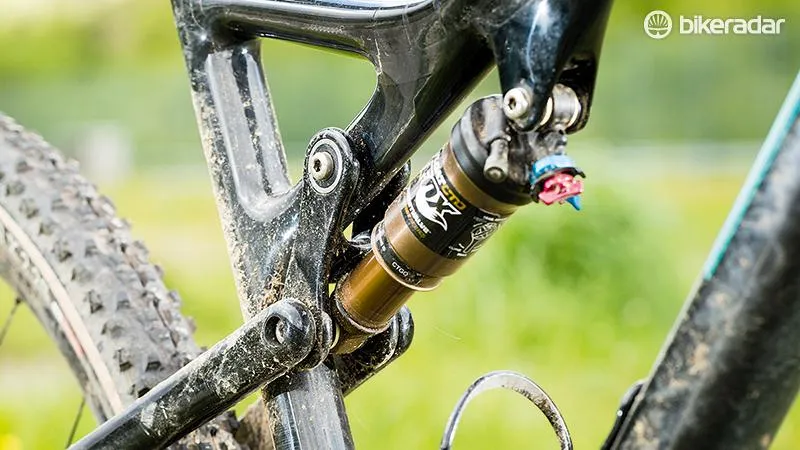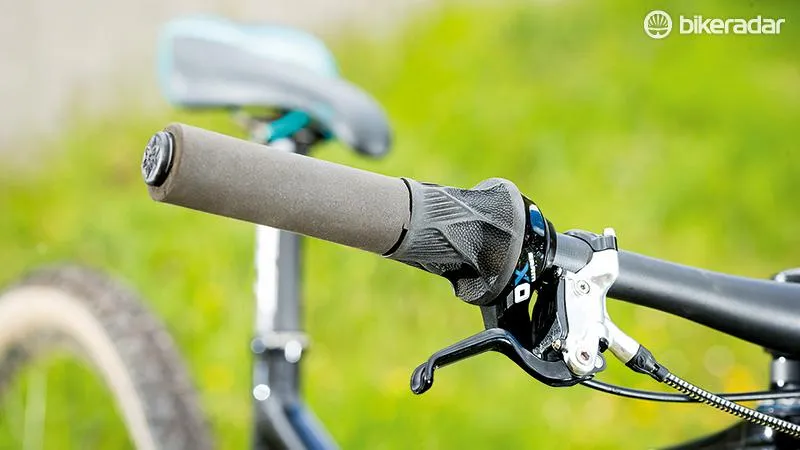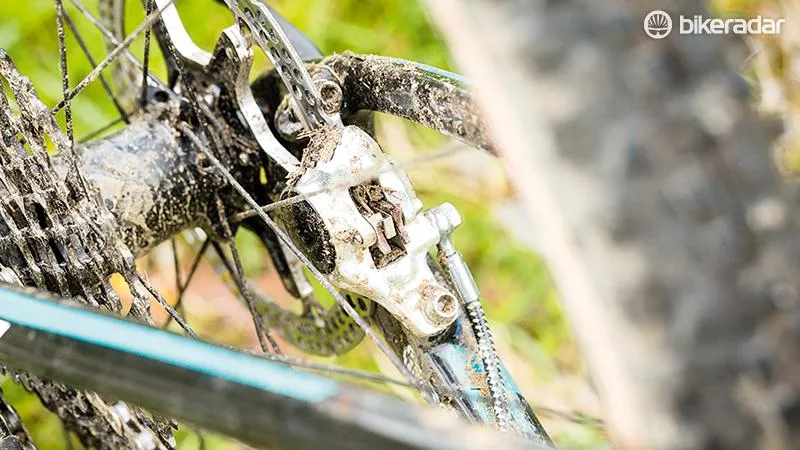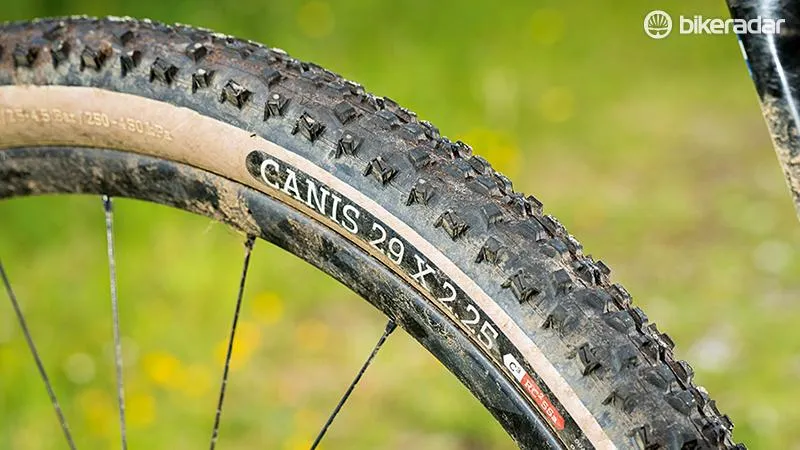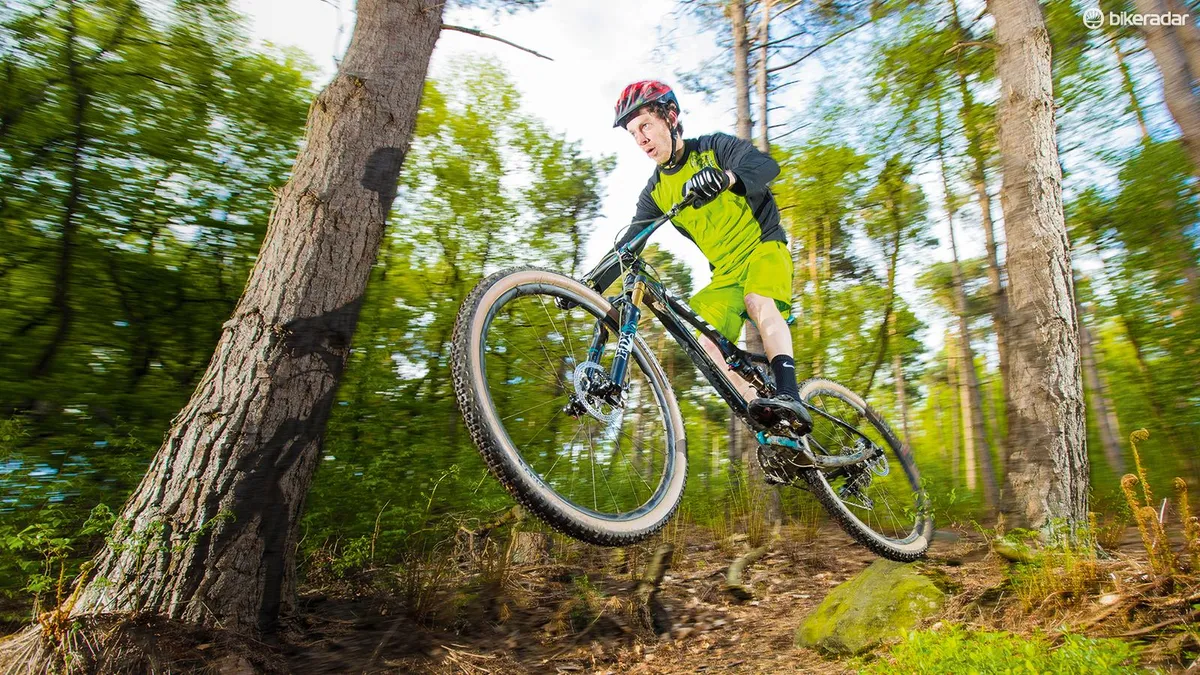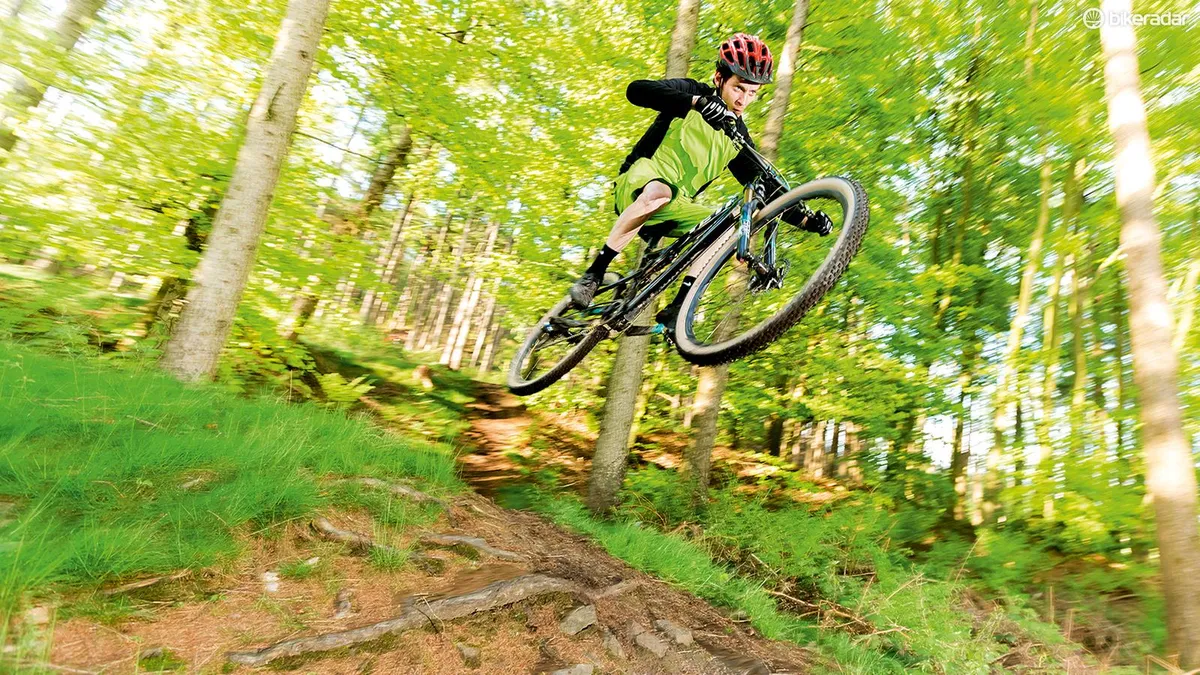Yeti has never followed conventional racing logic. The original FRO (For Racing Only) frame that helped establish the brand’s iconic status was a far heavier and sturdier thing, complete with BMX style single piece hooped stays, than those it competed against.
While it might have hurt on the climbs that meant it could be hurled down the descents harder than anything else. No surprise then that Yeti’s early pilots John Tomac and Juli Furtado were dominant in both XC and DH disciplines with a flat out flair that gave Yeti a fanatical global fan base it’s never lost.
Frame and equipment: natural shimmy, added bling
Thirty years after launching, Yeti is still taking aggressive lines with its race design and hasn’t lost any of its signature style either.
Related: Throwback Thursday – Juli Furtado's 1990 Yeti FRO
It’s certainly no accident that the carbon rear end of the ASRc racer clearly echoes the hooped stays of the original FRO, relying on the natural flex in the composite material rather than a pivot on the seat or chainstay. Even with a Fox Float shock and 100mm of rear travel it’s far lighter than the original ferrous frame at a claimed 1.9kg / 4.2lb.
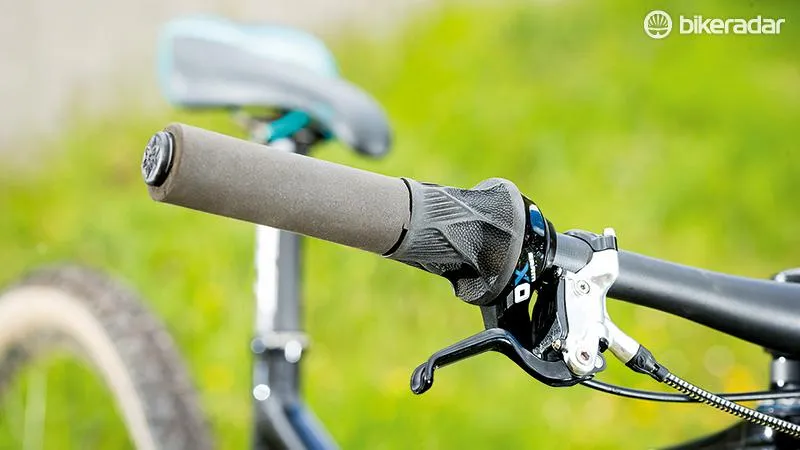
Foam grips and SRAM Grip Shifter hint at the flat out, minimal mass intentions
With our Race Face cockpit and crank, Easton carbon wheel pimped, large sized sample weighing in just over 10kg (an earlier build we first-ride tested last year was 10.23kg) we’ve no reason to believe it’s not a hyperlight chassis either.
While those weight and travel stats will work like a mechanical rabbit when it comes to attracting cross-country whippets, the front of the ASRc will also appeal to whippers and hippers. The 120mm fork capability and a 69-degree head angle is a common feature across 100mm framed bikes from Santa Cruz, Pivot and Scott and it’s top tube is similarly long and bottom bracket similarly low to the 429 Carbon and Spark 900 from the latter two brands.
Add a generous width, colour-coded Race Face riser bar and the static stance of the Yeti is a reverse mullet mix of party up front and business at the back.
Ride and handling: flexible though flighty friend
With a weight that many hardtails would be jealous of, it’s no surprise that the Yeti loves to climb but it’s definitely a tempo not a temper climber. The super thin, curved stays with no upper bridge are easy to twist sideways if you add torque to any wheel tweaks caused by trail camber or turning.
While the short linkage driven suspension is relatively stable under power there’s a definite bounce in the step of the rear end, a common feature of bikes that use flexible stays to allow movement rather than a conventional rotating pivot. Because it’s structural rather than suspension based there’s still a trace of it if you increase shock pressure or flick the shock to firmer modes. That means if you want pure performance punch from a Yeti you should pick the ARC hardtail.
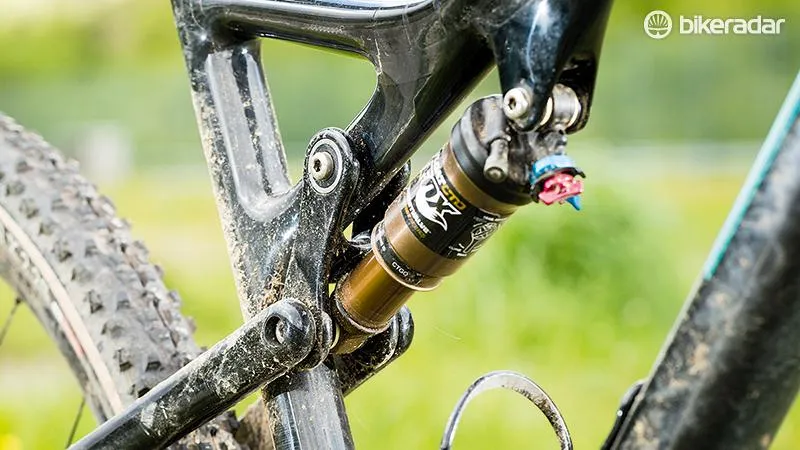
The 100mm of rear suspension boosts traction – but it can get overwhelmed
Where the ASRc comes into its own is on rough climbs where that same rear end flux lets the back wheel track and flow around cobbles, roots and ruts that might otherwise choke progress when you’re too tired to do the dodging yourself. It’s particularly suited to long back country climbs that demand a sit and spin siege mentality and extended surges rather than savage pace changes and sprints.
Throughout testing, the Yeti loved nothing more than getting onto the front of a group, sitting on a smoothly spun gear and putting anyone trying to hold its wheel into the pain cave as they rattled and chattered over debris that the ASRc would just glide over.
Unsurprisingly that same smoothness makes it superbly suited for epic mileage rides where the softness reduces fatigue more noticeably the further you go. The minimal weight came in handy when we rode so far into the wilds we ended up shouldering the bike across terrain even the amberwall Onza Canis 29er treads couldn’t find traction on.
The Yeti isn’t done when you get to the top either. Stable handling is amplified by the ASRc’s generous length, low belly and a linear suspension feel that naturally settles into its sag, making the Yeti feel more confident and planted than a taller, steeper angled race bike.
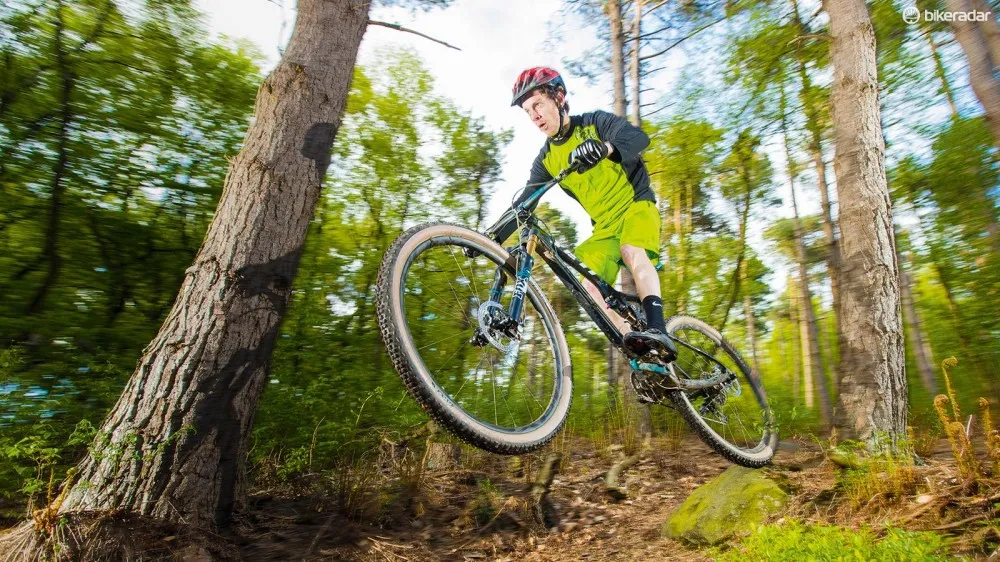
The Yeti's cocky swagger on climbs can lead you to getting carried away on descents
That’s because 120mm of fork travel and generous sized tyres on the 29er wheels can cope with surprisingly large trail debris too, and the result is a bike that gains speed very easily and likes to hold onto it too. While Yeti switches to 27.5in rolling stock for the XS and S sizes to create a more proportionally balanced ride, it also slackens the head angle by a degree to keep the trail attitude intact. Unlike many 100mm 29ers there’s a cable/hose port for an internally routed dropper seatpost, which we’d definitely recommend you take advantage of for trail riding.
That’s because the ASRc can be a handful if you get too carried away by its initially confident attitude and easy speed gain. Several times during testing we flew into top sections of descents full of swagger but rapidly found the same shimmy and twist that helps it find the line of least resistance at slower speeds can rapidly get out of hand in higher load situations.
As you might expect from such a lightweight bike, front to rear tracking can rapidly get significantly out of kilter and each glancing blow can throw you wider of where you want to be. It doesn’t help that the linear suspension tends to start thumping and jumping around as it gets forced repeatedly to full stroke, rapidly putting you on the back foot on bigger terrain, especially if you’re hoisted up high by a fixed seat height.
The nervous moments are more obvious because there’s such a character change from swaggering confidence to articulated anxiety, while a steeper-angled pure XC machine won’t suck you into descents as fast in the first place. That said, while we certainly had some sketchy moments where we thought the Yeti was going to catapult us straight into casualty, it never actually did and it’s still definitely a quicker technical trail bike than anything else in its freakishly flyweight category.
Specs as tested:
- Frame: ASRc large (RAW)
- Rear shock: Fox Float CTD
- Fork: Fox 32 Float CTD (120mm)
- Headset: Cane Creek 40 InSet taper
- Stem: RF Turbine stem 60mm (35mm clamp)
- Bar: RF Next bar 10mm (35mm clamp)
- Post: RF Nex
- Saddle: SDG BelAir 2.0
- Crankset: RF Next (32t)
- Wheelset: Easton Haven carbon
- Tyres: Onza Canis
- Brakes: Formula R1 Racing
- Drivetrain: SRAM XO1
- Grips: SupaCaz Siliconez
